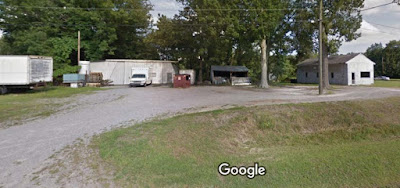Many bakeries may be new to FDA inspections, although it was noted that this firm had a previous FDA inspection in 2014 (and unfortunately, didn't make much progress from that time...or so it seems). But one of the items that is most interesting involves training, or the lack of training, specifically of management (see further down).
- Unsanitary condition noted on 1) walls, overhead door, and cooling fan in areas used to cool baked bread., 2) condenser fans and support pole in walk-in refrigerator used to store uncovered apple pies, and 3) 3-Compartment sink used to clean in process equipment.
- Peeling paint in the incoming supply room above ingredient containers which had broken lids, no lids, lids not fully covering materials. Additionally, peeling paint was observed on the ceiling of the walk-in refrigerator used to store uncovered apple pies.
- Fresh and dried dough on the ceiling above an uncovered mixer and along the rim of the (b)(4) bucket. (b)(4) is used as a processing aid in the production.
- Condensation issues with buildup inside the proofing along the ceiling, sides of walls, and along the door frame. As the uncovered dough enters the proofing (b)(4), condensation drips directly onto uncovered dough. Dark brown condensation buildup was observed in the production area on the ceiling above the proofing and the final bread rolling area. Condensation buildup was observed in the walk-in freezer fans located above finished product.
- Inadequate screening or other protection against pests - the outer door and warehouse garage doors were open during food production activities without adequate protection to prevent entry of pests into the production facility.
- The procedure used for cleaning and sanitizing of equipment and utensils has not been shown to provide adequate cleaning and sanitizing treatment - the 3-compartrnent sink was set up in the following incorrect order: wash, sanitize, and rinse. Utensils were then immediately used without allowing them to air dry. At the final dough, recently used trays covered with residue were slammed on the floor to remove particles and then placed onto the cart, without washing, to be reused. Our investigator observed fresh dough immediately placed on these trays and sent to proofing . In the proof , there is no evidence that the conveyor trays used to transport the dough from the extruder to the are sanitized. The firm’s water filters have not been changed since 2013. There was dark brown and slimy residue in the filter. The filtered water is used in the production of dough, to clean large pieces of equipment, and used in the 3-compartment sink.
But this is the item to note - "Personnel responsible for identifying sanitation failures and food contamination lack a background of education and experience to provide a needed level of competency as required by 21 CFR 110.10(c). Specifically:
- The production manager did not know the correct order of operation to properly clean and sanitize utensils at the 3-compartment sink. The 3-compartrnent sink was set up in the following incorrect order: wash, sanitize, and rinse. During the inspection, the rinse water was observed to be cloudy and dirty, providing a possible source of cross-contamination.
- The production manager did not know what the adequate sanitizer concentration should be; there were no test strips available to verify the concentration, and he relied solely on placing one capful of bleach into water
- The president of the company lacks basic sanitation knowledge. For example, when asked about the sanitation procedures, he commented on cleaning the floors and was not aware of equipment cleaning and maintenance schedules. He also did not know the required sanitizer concentration and did not provide test strips to employees for verification."
Finally - the firm failed to provide appropriate training in food handling techniques and food protection principles have not been provided to food handlers 1) an employee touching ready to eat bread rolls with bare hands to determine if they were cool enough for packaging. 2) an employee in the packaging area wearing only one glove, on the right hand. The employee was manually sorting bread into final packaging with both the gloved and bare hands.
FDA Recall Notice
https://www.fda.gov/ICECI/EnforcementActions/WarningLetters/2017/ucm570807.htm
July 5, 2017
WARNING LETTER
Brent A. Bischoff
President
K & B Company Inc.
109 Arnold St.
Gallup, NM 87301


